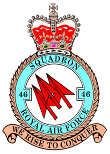|
later Trademark called and reported more trade coming in from the south and we were to go to Angels Five and vector 180°. We started climbing and heading south. We knew that if the bogey was coming from the south we were on intercepting courses and we would soon have to reverse direction. Trademark called and told us to turn onto 290° and keep climbing. At 1:30 a.m., Graham got a contact directly above us as the bogey crossed our path. We started to turn and regained contact hard above us, but he again disappeared. I requested help from Trademark but he couldn't give assistance. Graham and I decided that it was probably another night fighter using his radar to take evasive action. By this time we were at 8000 feet and the Controller called and told us to resume patrol southward at our present height. It was an extremely clear night and at 1:35 a.m. I saw another plane cross the moon track on a course of about 020°. I could clearly see his shadow on the water, so deduced his height to be about 50 feet. I turned to the right and started a steep dive to go after him, at the same time I called Trademark and asked for help. Again they could not help me. We went down to 100 feet and turned from side to side to try and pick up the contact, to no avail. After a while we gave up the search and resumed patrol. At 1:51 a.m. Trademark called and told us to vector 180° at Angels Ten for base. The journey back to Gambut was uneventful, although I did ask Graham to watch our rear until we were well clear of Crete! We discussed the fact that we did not think it was going to be a piece of cake from now on because it appeared the enemy was deploying opposition in the form of night fighters with some type of radar on board. We were lucky to have gotten the Junkers 188 as it had been taking some quite violent evasive action indicative of radar control. However, every time we needed help the Controller stepped in, which of course was how it was supposed to work. As Graham picked up the Gambut beacon about 50 miles out, we started losing height, ready for landing. The weather was still fine with a slight haze, the moon had almost set and there were some strata cumulus clouds at 5000 feet. Visibility was about 10 miles. We touched down on the runway at 3:30 a.m. having been in the air for 4¾ hours…the last plane to return. We got our glass of brandy from the I.O. before we started the debriefing. He told us that Phelan and Baldwin had got a Junkers 52. We found out later in talking to Phelan, that all the time he was in the target area his starboard engine had been acting up. It had been cutting out for no apparent reason, but he stayed there and pressed home his attack. This was very commendable because being that far from base with only one good engine could be a very nervous situation. A lot of pilots would have headed for base immediately and would not have been criticized for doing so. We also learned that Steele had chased what he thought was a 188, but wasn’t successful in getting close enough to attack. We went over our attacks with the I.O. He was especially interested in the head-on interception because these were the most difficult to accomplish, requiring a lot of trust and cooperation between the pilot, controller and navigator. We finished our debriefing about 5:00 a.m. and it was time for bed. The Squadron score was mounting. It was now 8 destroyed and 1 damaged. We were not scheduled for flying the night of Sept.29th. having just returned that morning. The crews going tonight were W/O.Griffin and Flt./Sgt.Green, W/O.Hammond and Flt./Sgt. Harrison, Flt./Sgt.Bays and Flt./Sgt.Battiste, and lastly F/O.Kirk and Flt./Sgt.Carr. Flt./Lt. Bradley and Flt./Sgt. Forrester flew in from Idku bringing another Beaufighter, but did not go on operations that night. Griffin and Green claimed a probable JU 52, Hammond and Harrison destroyed two JU 52's and damaged one other, Bays and Battiste damaged a JU 52, while Kirk and Carr were unlucky. It was September 30th, and the Squadron total had grown to 10 destroyed, 1 probable and 3 damaged. We awoke the next morning to a blinding sandstorm. Sand was sand piled on our beds and blowing through every crack in the tent. The journey to the Mess for breakfast was an ordeal. Visibility was down to a few feet and sand was blowing in our mouths and eyes. Upon reaching the Mess tent, the situation was not much better; there was sand on the tables and in the food. We stayed in the Mess tent most of the morning. Four crews were scheduled for operations that evening of the 30th. They were Flt./Sgt. Chapman and W/O.Briginshaw, Flt./Sgt.Grimshaw and Flt./Sgt.Waller, Flt./Lt.Bradley and Flt./Sgt. Forrester and lastly P/O.Steele and W/O. Clay. The ground staff was not able to work on the planes to get them ready for air test and flying was out of the question. There |





